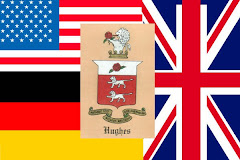The back of the brick shows sixteen smaller bricks with lines that could be cut. I'm glad the whole was purchased and it is now a welcome chachki in my house ;-) The original holiday note mentioned that the antique dealer told the purchasers that tea was sent from the Orient to America in bricks back in the "fur trade" days. WOW! Could this brick be that old? I was immediately thrown into a need to know frame of mind.
One website, Interesting History of Chinese Tea Bricks, was very useful, giving me the history and use of tea bricks.
“Tea bricks are blocks of whole or finely ground black tea, green tea or post fermented tea leaves that have been packed in molds and pressed into block form. This was the most commonly produced and used form of tea in ancient China prior to the Ming Dynasty.
Although
tea bricks are less commonly produced in modern times, many post fermented teas
such as pu-erh, are still commonly found in bricks, discs and other pressed
forms. Tea bricks can be made into
beverages or eaten as food and were also used in the past as a form of
currency.
To produce
a tea brick, ground or whole tea is first steamed, then placed into one of the
number of types of press and compressed into a solid form. Such presses may leave an intended imprint on
the tea such as an artistic design or simply the pattern of the cloth with
which the tea was pressed. Many powdered
tea bricks are moistened with rice water in pressing to assure that the tea
powder sticks together. The pressed
blocks of tea are then left to dry in storage until a suitable degree of
moisture has evaporated.”
The next website I wandered onto was an auction of a tea brick which looked the same as mine. The estimated value was between $500-$1000.00. Although the winning bid was $475.00, excitement was beginning to mount. Perhaps not Ming Dynasty, but still worthy.
Many of the Internet sites I Googled did have a photo of my tea brick, even Wikipedia, which identified it as, a brick of Hubei mi zhuan cha, made powdered black tea". Likenesses of my tea brick seem to be a featured example on many websites. Could that mean that numerous collectors have a tea brick like mine in their collections? Does that make mine less valuable? The answer to those questions came when I read Ken Bressett's article entitled, Tea Money of China. Towards the end of the article, along with a photo of "my" Chinese tea brick, I found this paragraph:
“In the period 1975 to 1985 molds for this design were used in the Peoples Republic of China to produce ore tea bricks for sale as novelty items and tea and for drinking. These bricks were packaged and sold in grocery stores both in the United States and Europe at the cost of about $12 to $16 each. The main difference between these and the originals made in the 1930’s is the quality of tea and it’s still fresh odor There is one other subtle point that helps in making a positive identification. The original bricks have a seven-character Chinese legend at the bottom of the front design while the modern bricks have eight characters.”
That information certainly popped by tea brick bubble. Counting the Chinese characters at the bottom of my tea brick.....one, two....seven eight. Long story short, my Chinese tea brick was made perhaps 40 years ago and certainly will not lead me to an easy retirement. On the Flipside, it is an unusual piece and will be proudly displayed in my family room. Plus when visitors have any questions, I will be able to actually have some answers.
I WOULD LOVE TO HEAR FROM YOU. All comments are welcome; however, if they are inappropriate, they will not be published. PLEASE post your e-mail in the comment section if you would like to network about a particular surname or topic. I will capture it for my use only and not include it when I publish your comment.
© 2018, copyright Linda Hughes Hiser









No comments:
Post a Comment